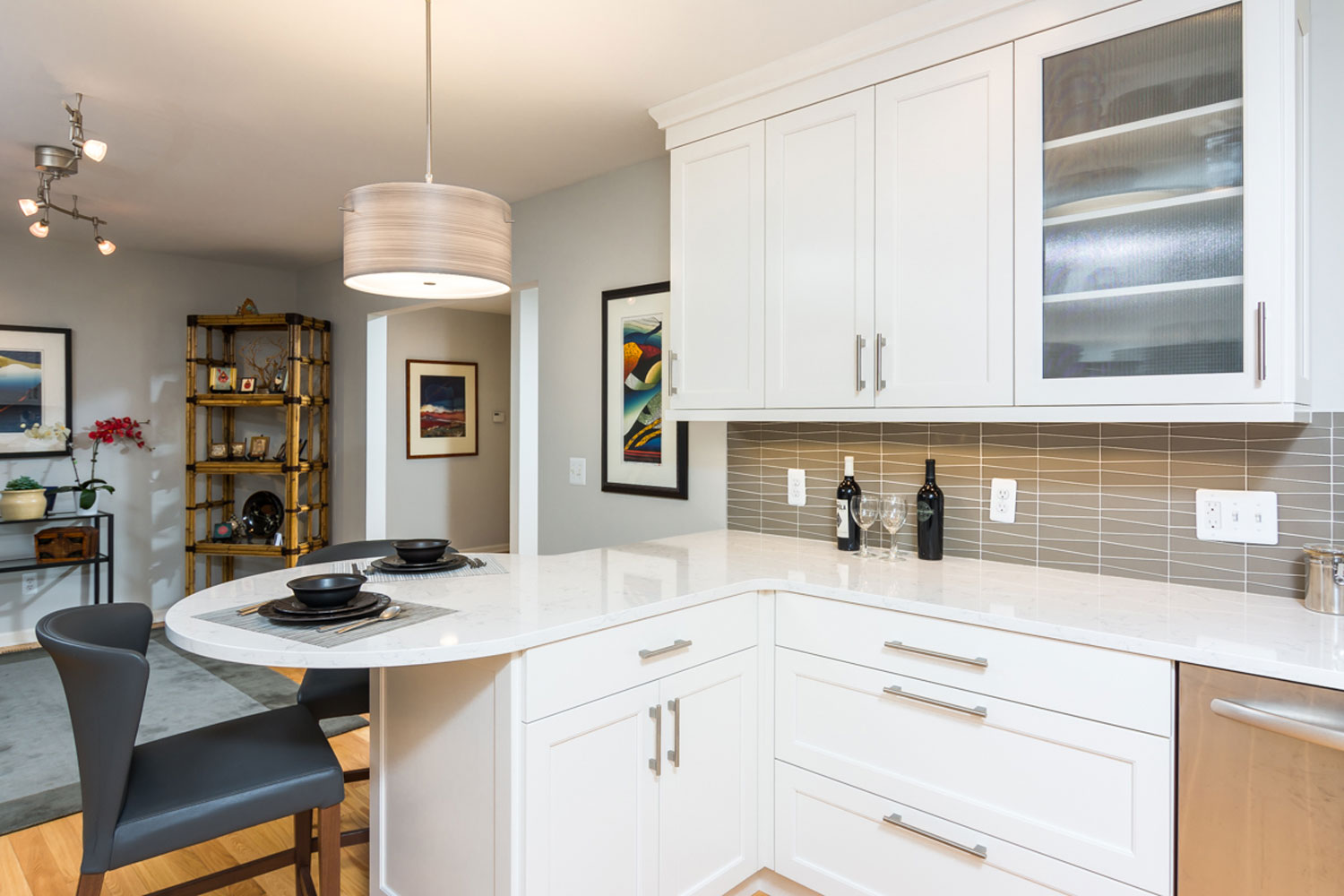Kitchen Cabinet Construction | Learn Why the Cabinet Box Matters
Learn Kitchen Cabinet Construction Methods
Kitchen cabinets are the most visible focal point of any kitchen design. They not only establish your style and aesthetic, they're also one of the most used elements in your kitchen. While it's not nearly as exciting as choosing the perfect countertop and appliances, your kitchen cabinet construction is one of the most important choices you'll make in the long term usability of your kitchen. Understanding the quality of construction and materials used when building cabinet boxes can help you to understand the wide range of price points that cabinets cover.
Let's explore the ins and outs of cabinet boxes. What they are, how they're made, typical materials and some of the benefits and drawbacks of each.
What is a kitchen cabinet box and how are they made?
When your designer or builder is talking about the cabinet box, they're talking about the physical cabinet, excluding the doors, hardware, and trim. A cabinet box consists of a toe kick (if it's a base cabinet), floor, shelves, sides, back and top rail.
Cabinet design styles
How a cabinet is made varies among manufacturers, but in general, there are two different styles, framed and frameless. In terms of construction, they are similarly made. The differences are the look and the accessibility to the inside of the cabinet.
Framed kitchen cabinet construction
Framed cabinets incorporate a wood frame around the front outer edge of the cabinet. They are generally more traditional looking and offer some style variation depending on the door overlay. There are three types of overlays. Full-overlay completely covers the face frame. Partial overlay means the frame is partially covered and full-inset means the doors and drawers are made to fit within the face frame opening.
Frameless kitchen cabinet construction
Frameless cabinets offer more accessibility. The amount of storage is also slightly greater as the drawer box is bigger because it is not limited by the front frame. Also called “European” style cabinets, frameless cabinets typically sport full overlay doors.
Materials used in kitchen cabinet boxes
Cabinet materials can vary widely and the material used directly effects the price. “Solid wood” cabinets can be made of solid wood, plywood, or particle board which is an engineered wood product. Cabinet boxes can also be made of other materials including stainless steel, plastic laminate, and MDF covered with melamine, or thermofoil. The material and construction methods factor heavily into the price.
“Standard kitchen cabinet construction” is made using particle board. They are heavy and dimensionally stable in a low moisture environment, meaning that they don't warp, but when exposed to steam, moisture or liquid they can swell. The quality of the box is dependent upon the quality of the particle board used.
Manufacturing Methods for Kitchen Cabinet Construction
The methods used to build cabinets vary by manufacturer and the quality you pay for. Construction plus materials are the main drivers of the overall cost. Kitchen cabinets made using predominantly wood and custom built will cost more than standard cabinets.
The joinery used in your kitchen cabinet construction is directly related to their quality and durability. Cheaper cabinets will use nails, screws, staples and glue. While these are not true wood “joinery” techniques, they are found in lower quality cabinets. They can be used to reinforce more traditional techniques, but if used alone, they are generally less sturdy and less expensive.
Search for cabinets that are made with good joinery techniques where the parts “lock” together like mortise and tenon or dovetailed joints. Supplemental fastening like glue, nails or screws, can make a cabinet even stronger connection. Strong joints mean durable cabinets.
Finally, cabinet construction methods and materials will also affect the finish used. Standard cabinets are generally covered with a material like thermofoil or melamine. Wood cabinets allow you to customize the look using different finishes like paint, stain, lacquer or glaze. Materials, construction, and finish are three big contributors to the overall cost of your kitchen cabinets.
Choosing the right cabinet boxes is an important aspect of your overall satisfaction and the usability of your kitchen. At Forward Designs, we're experts in helping you to choose high-quality cabinets to meet your style, needs, and budget. We work with a variety of manufacturers offering top quality construction and materials. Our design team has been helping clients throughout the Ann Arbor, Michigan, area to choose the perfect cabinets to meet their needs. We can help you too! Give us a call and let us show you why we're the top home remodeling and design company in Ann Arbor!

